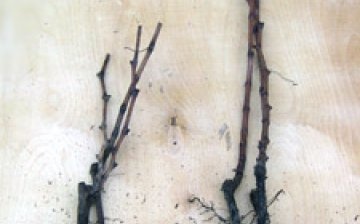How to choose grape seedlings?
If you decide to set up a vineyard, first of all, you need to collect information on how to do it correctly, then how to care for the grapes and form them. And most importantly, you need to understand how to choose the right variety and grape seedlings, taking into account the climatic conditions and soil, and other conditions for subsequent cultivation.
Grape seedlings are divided into:
- first grade, have four evenly spaced roots, of which at least two must have a base of at least 2 mm and at least one must reach at least 20 cm in length during the ripening period;
- the second grade, inferior to the first grade and the elite varieties of seedlings, they have at least three roots and, with good care, are quite capable of giving a decent harvest;
- low-quality varieties of seedlings, if they take root, they remain weak, susceptible to diseases and give a very meager harvest;
- an elite variety, seedlings are distinguished by four roots, which have a thickness of at least 2 mm at the base and are evenly spaced around the circumference. In such seedlings, during the ripening period, the growth length should be more than 25 cm with a shoot diameter of at least 5 mm. It is these conditions that help the emergence of strong plants that will give very good yields in the future.
When choosing planting material, the varieties of the grapes themselves are equally important. They are divided into canteens, which can be eaten fresh and into technical ones, from which wine and juice are produced.
Also, grapes are divided into early ripening, mid and late ripening, so it is very important when choosing them to take into account the climatic conditions in which the grapes will be grown, since maximum heat is needed for the plant to ripen.
Do not forget about the frost resistance of the varieties, thermophilic grape varieties will never give a good harvest in the middle lane, or if there are berries, they most likely will not ripen.
For colder regions, hybrid varieties that have been bred for harsh temperature conditions and are resistant to fungal diseases are the best choice.



